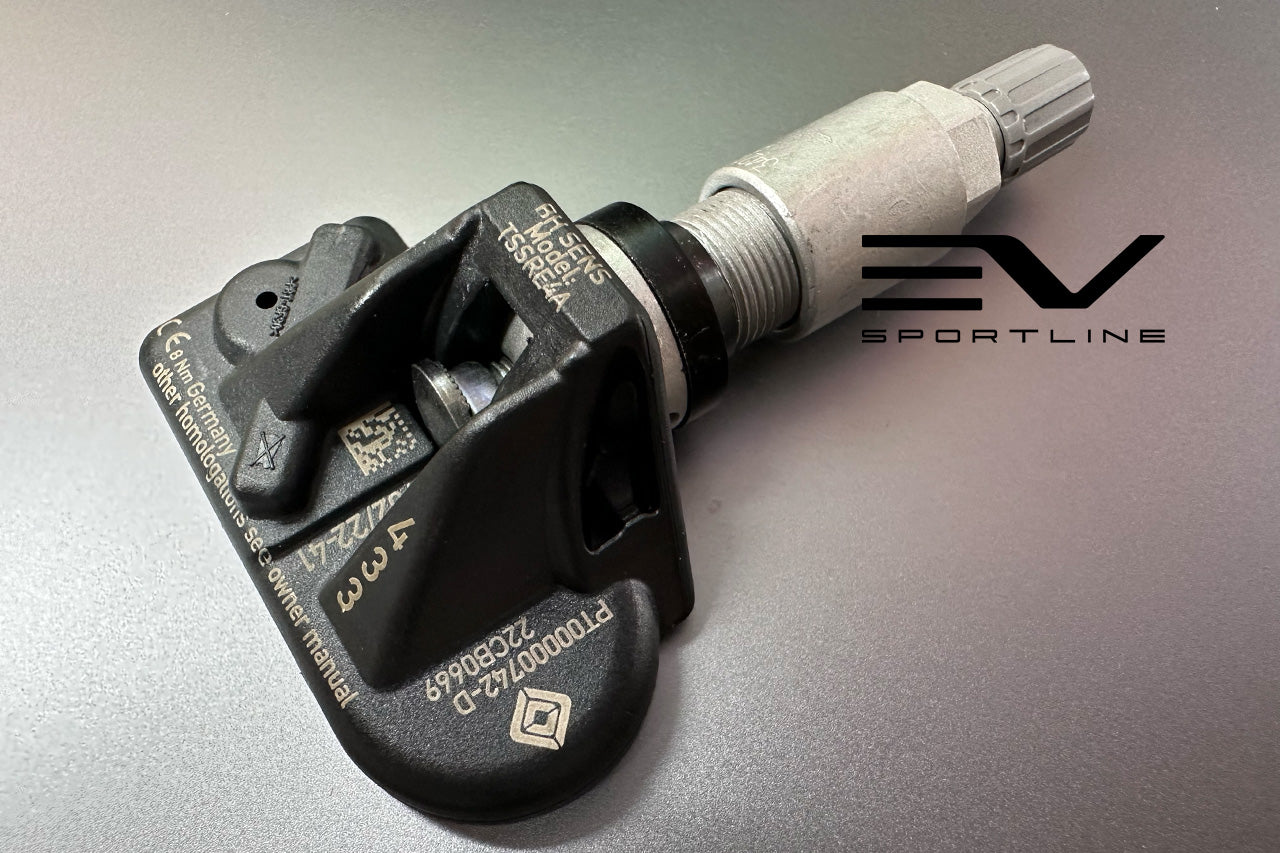Installing a new set of wheels on your Rivian R1T or R1S requires reconnecting and syncing the Tire Pressure Monitoring Sensors (TPMS) to the Rivian. Reconnection and syncing is a passive process, activated simply by driving the Rivian after installing the new wheels & TPMS sensors. There is no need to have Rivian Service 'reconnect' or 'recalibrate' the TPMS sensors, as long as you are using Factory Rivian TPMS sensors or EV Sportline's aftermarket Rivian-spec TPMS sensors.
Steps to properly connect (sync) Rivian R1T / R1S TPMS sensors:
1. Select a Rivian-spec TPMS sensor - Available HERE
Note: EV Sportline's Rivian-spec TPMS sensors are manufactured by the same factory which makes the factory TPMS sensors. The sensors are identical, except the EV Sportline version does not have a Rivian logo on it. The valve stem on the EV Sportline version is black anodized, a spec we believe looks sportier than factory Rivian TPMS sensors 'silver' valve stem. EV Sportline Rivan-spec TPMS are guaranteed to work properly on your Rivian. See below comparison:

2. Install the TPMS sensor during the tire mounting process:
Connecting and Syncing the new TPMS to the Rivian
3. After the new wheel and tire assemblies are installed on the vehicle, drive the vehicle to initiate the connecting and syncing of the new TPMS to your Rivian. There are no buttons to push or actions to take, other than driving!
Next, BE PATIENT! It varies how long you need to drive to get them to connect. This is true for both Rivian TPMS and our aftermarket EV Sportline TPMS. This is normal and not unusual, nor exclusively a Rivian thing. Same sort of connection lag with Tesla and all other cars. A lot of confusion with customers on this topic....you could drive 2 ft and have them connect - or drive 25+ miles and they haven't connected yet. The nature of TPMS is 'intermittent' communications by design; this is so the internal TPMS batteries last indefinitely - plus, tire pressures are typically slow to change; it is not necessary to have 'constant and instant' tire pressure monitoring. But sometimes, they are slow to connect.
What we have found: Drive for over 20 minutes, at highway speeds if possible. This 'typically' works. However, sometimes it hasn't. Sometimes it has take a couple of driving cycles to trigger the connection process. Sometimes it takes a couple days of driving. Eventually, the sensors will connect.

